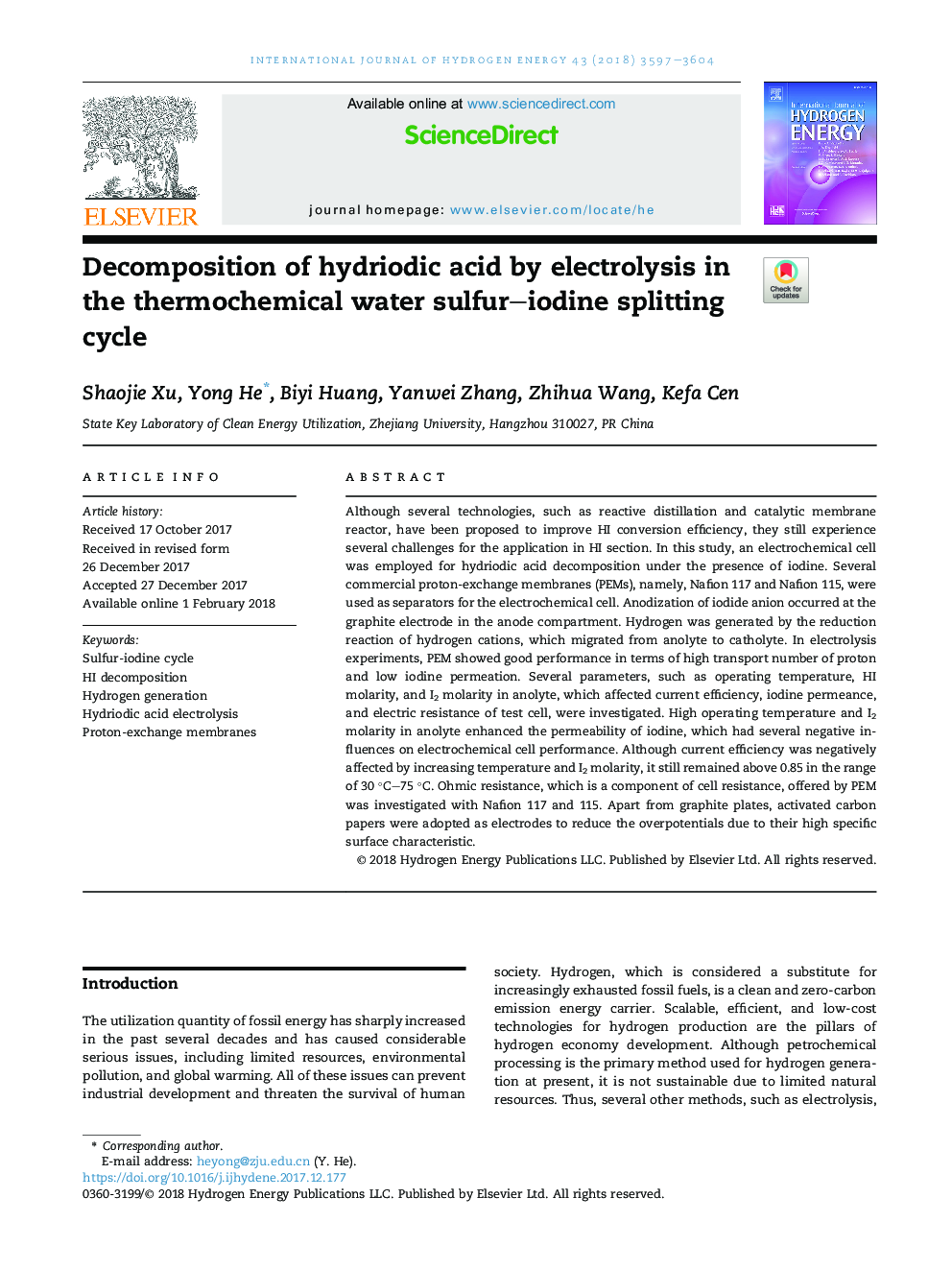| Article ID | Journal | Published Year | Pages | File Type |
|---|---|---|---|---|
| 7707564 | International Journal of Hydrogen Energy | 2018 | 8 Pages |
Abstract
Although several technologies, such as reactive distillation and catalytic membrane reactor, have been proposed to improve HI conversion efficiency, they still experience several challenges for the application in HI section. In this study, an electrochemical cell was employed for hydriodic acid decomposition under the presence of iodine. Several commercial proton-exchange membranes (PEMs), namely, Nafion 117 and Nafion 115, were used as separators for the electrochemical cell. Anodization of iodide anion occurred at the graphite electrode in the anode compartment. Hydrogen was generated by the reduction reaction of hydrogen cations, which migrated from anolyte to catholyte. In electrolysis experiments, PEM showed good performance in terms of high transport number of proton and low iodine permeation. Several parameters, such as operating temperature, HI molarity, and I2 molarity in anolyte, which affected current efficiency, iodine permeance, and electric resistance of test cell, were investigated. High operating temperature and I2 molarity in anolyte enhanced the permeability of iodine, which had several negative influences on electrochemical cell performance. Although current efficiency was negatively affected by increasing temperature and I2 molarity, it still remained above 0.85 in the range of 30 °C-75 °C. Ohmic resistance, which is a component of cell resistance, offered by PEM was investigated with Nafion 117 and 115. Apart from graphite plates, activated carbon papers were adopted as electrodes to reduce the overpotentials due to their high specific surface characteristic.
Related Topics
Physical Sciences and Engineering
Chemistry
Electrochemistry
Authors
Shaojie Xu, Yong He, Biyi Huang, Yanwei Zhang, Zhihua Wang, Kefa Cen,
